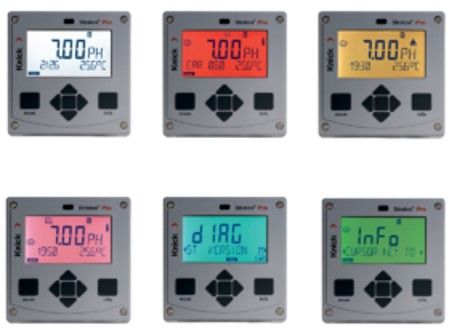
The Value of Enhanced Sensor Diagnostics
How many pH sensors did we throw away last month?
Remember the days when a terrible noise from the engine compartment or the smell of burning oil signalled a problem with your car? Before cars had built-in diagnostics, we didn’t just discard our vehicles; we took them to a mechanic for evaluation and repair.
Nowadays, our car dashboards provide precise diagnostics, highlighting issues and signaling when maintenance is needed. Memosens smart pH sensor technology offers the same advantage. So, why discard pH sensors without first diagnosing the issue?
The most common troubleshooting technique by pH users today seems to be to simply throw away the sensor and replace it with a new one. This approach wastes hundreds of Pounds each time a sensor isn’t functioning as expected, adding up to thousands of Pounds a year. But why does this happen?
Digital Sensor Diagnostics
There are several reasons: maybe it’s because of a time crunch with the process shut down due to the measurement being out of service. Perhaps it’s because the sensor is in a hazardous environment or difficult to reach location, or simply the convenience of replacing rather than diagnosing. However, the root cause is often that most technicians have no way of knowing what’s wrong with the sensor. It’s challenging to fix a problem you can’t define.
The introduction of Memosens digital sensing technology offers a much-needed solution. “Smart” sensors now provide feedback about their health. Portable meters and transmitters with intuitive user interfaces make it easy for technicians to perform quick diagnostics. They can determine if a sensor is working properly, needs replacement, or just requires cleaning and recalibration.
Diagnostic Tools
The Knick Portavo portable meter can be used both in the field and in the shop or lab to provide sensor diagnostics. It evaluates sensor performance during calibration (zero, slope, and response time) as well as sensor wear and electronics (Sensocheck).
If the sensor is good for use in the field, the hexagon remains blue. As one of the measured values begins to degrade, the blue moves toward the smaller red hexagon in the middle. Once it hits the red, it’s time to recalibrate or replace the sensor. No need to be an expert in pH measurement!
The Stratos and Protos series transmitters from Knick provide an easy-to-understand user interface in the field. The Stratos transmitter changes colour based on the sensor’s condition.
The Protos transmitter offers the Sensor Network Diagram and the KI Recorder. This advanced diagnostic tool is designed to monitor and detect abnormalities in various process variables like pH and temperature and releases a message if there is a deviation. The visualization is graphical, showing process and limit value variations for both variables.
Summary
With digital sensors now allowing offline calibration, there are no excuses for operators to discard sensors without proper evaluation. Diagnostics and calibrations can be performed in a controlled environment at a convenient time. Field maintenance is reduced to swapping a pre-calibrated and validated sensor for the troublesome one in the process.
Don’t wait for the screech and smoke to tell you there’s a problem. Memosens smart digital technology allows you to be the mechanic.